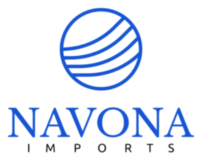





The Romagna area of Italy is known for the “Piadina” a PGI certified traditional flatbread made with 100% local wheat. Riccione Piadina’s lines of “Cassone Romagnolo” (cheesy stuffed, dough pockets), traditional “Piadina” (made with pork lard), vegan Piadina (made with Extra Virgin Olive Oil) and certified gluten free Piadina are loved by Italians as a favorite street food option.
Their patented technology makes Riccione Piadina leaders for production volume, quality and above all else…taste!
In 25 years the Riccione Piadina brand has been synonymous with quality in Italy for their production of fresh, frozen and shelf stable Italian flatbreads.
An Italian tradition from the Riviera Romagnola!

100% ROMAGNA WHEAT
Riccione Piadina carefully selects all of their raw materials including their 100% Italian Wheat, grown locally in the Romagna area of Italy. Their completely transparent supply chain is fully certified and traceable. They buy directly from local farmers that adhere to the strictest of guidelines for the quality of their wheat.
Harvested wheat is then stored in dedicated supply chain wheat centers. Each procedure has been outlined in such a way that the processes are carried out with the greatest care to avoid bringing the wheat from the production chain into contact with the rest of the soft wheat processed by the mill. Even the processing of wheat and its transformation into flour are carried out following specific tested phases in order to avoid cross-contamination.
Today the soft wheat that Riccione Piadina has chosen for their flatbreads has a supply chain certification and it is exclusively certified Romagna wheat. The goal is to create value for farmers, improve environmental sustainability and give consumers more certainty about the origin of raw materials. In order to have certain data on traceability, the companies involved in the project are required to report all data. Starting from the cadastral situation and the quantity of seeds used, the companies provide information about treatments and fertilizations of the cultivated fields, up to the final numbers of threshing. In this way, the ones in charge of control can verify that the harvest does not exceed what was sown, clearly taking into account the environmental situations and the yield of that year’s harvest.
Buy Online.
Login to access our B2B Portal.
Register as a Buyer
Get Access to wholesale prices and our portal.


